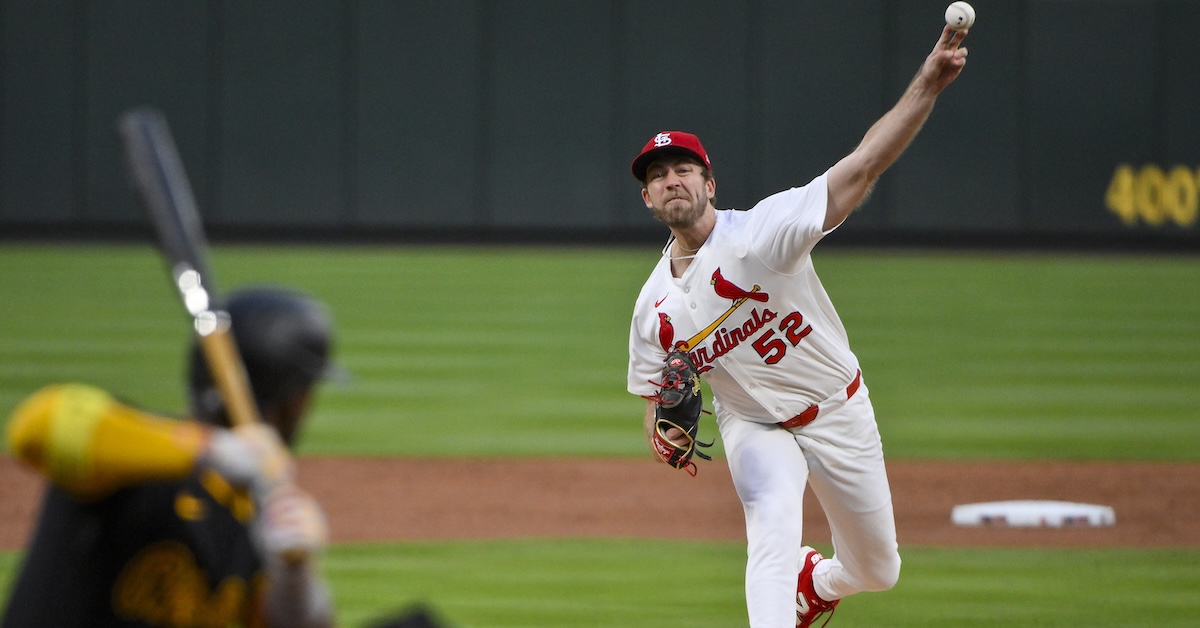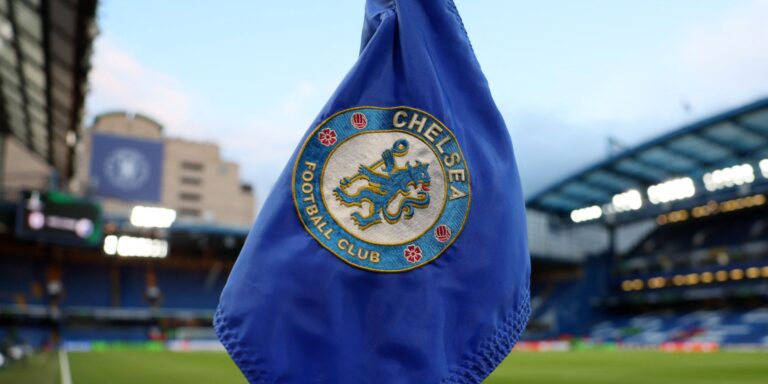

On Tuesday night, Paul Skenes — the most electric pitcher in baseball, the future face of the sport, the only reason (apart from potatoes or metallurgy) that anyone would want to go to Pittsburgh — took the mound and did his stuff. He struck out six Cardinals in six innings pitched, allowed just two runs, and threw 22 four-seam fastballs that clocked between 98.0 and 99.1 mph. If you watched the game, you got what you were promised.
But Skenes was outdueled on the evening, by a pitcher whose developmental track took substantially longer than Skenes’. Matthew Liberatore struck out eight batters over seven innings, allowed only one run, put six baserunners on to Skenes’ seven, threw 70 strikes on 99 pitches to Skenes’s 60 out of 102, and got 17 whiffs to Skenes’ 13.
That’s business as usual for the 25-year-old lefty this year. After seven starts, Liberatore is sixth in the league in both pitcher WAR and FIP. He’s gone six or more innings in six of those starts; only Hunter Brown and Zack Wheeler have more appearances of that length this season.
I wouldn’t say that Liberatore’s route to top-of-the-rotation status has been circuitous, because he was a first-round pick out of high school in 2018; Skenes is one of the very, very few pitchers who generated more hype than Liberatore did as an amateur. But high school lefties can take a long time to cook, and even without missing any substantial time due to injuries, Liberatore did miss a year of minor league experience during the pandemic. He also had to adjust to a new organization that same year; he was the headliner who went the other way in the first Randy Arozarena trade.
The sum total of all that is that Liberatore was a near Gary Sánchez-level recidivist top-100 prospect. If you went back to 2019 and told people that Liberatore would be performing like one of the top starters in the game by 2025, I don’t think anyone would’ve been especially surprised.
But if you’d told people that was the case, and that Liberatore had only made 31 big league starts to this point in his career, without suffering major injuries, that would’ve been shocking. Skenes, incidentally, also has exactly 31 career major league starts, and he was a freshman catcher at the Air Force Academy the same year Liberatore threw 124 2/3 innings in Triple-A.
The quantity of ink spilled about Liberatore as a prospect gave David Laurila plenty to talk about when he had Liberatore go through two old scouting reports a month ago. It’s interesting to see Liberatore’s thoughts on his own development, because while a lot of the stuff that made him such an intriguing high school prospect is still there, he’s kept adding new pitches on top of that foundation.
The foundation in question: Two mid-90s fastballs (a four-seamer and a sinker), a plus-plus mid-70s curveball (the rare pitch where the velocity matches the grade), and great finesse and refinement for a teenage pitcher. Liberatore was working on a slider already in high school and added a changeup before he reached the majors for the first time in 2022. That’s a five-pitch mix, and Liberatore would throw all of them to righties, and four of them (everything except the changeup) in equal proportions to lefties.
For two seasons, Liberatore split time between the rotation and the bullpen, and got knocked around quite a bit. He posted ERAs over 5.00 in both 2022 and 2023.
Then last year, he made two changes: First, he reversed the usage rate of his slider and curveball. In 2023, Liberatore’s slider was mostly a left-on-left weapon, a pitch to be thrown off the four-seamer. Now it’s his most-used pitch against lefties by a 2-to-1 margin, and his second-most common pitch against righties. The big, hard-breaking curveball is still around — here, let me show it to you because it’s so pretty.
But at this point in Liberatore’s career, the curveball is more than a show-me pitch, but not much more than a show-me pitch. He only threw five of them on Tuesday, but the massive movement and velocity differential (everything else Liberatore throws comes out of his hand between 8 and 20 mph faster) means the deuce comes as a surprise to hitters whenever Liberatore throws it. If he needs a cheap called strike or something weird to get hitters to chase, the curveball is still there.
As I said, Liberatore is not one of those pitchers who has a different set of pitches for each side of the plate. Righties will see six different pitches, lefties four. And each of Liberatore’s two primary fastballs has a secondary pitch that tunnels off of it in the upper 80s with more pronounced vertical drop: for the sinker, a changeup; for the four-seamer, the slider.
Here’s an example from Tuesday’s game. Liberatore came right out of the gate with a low fastball for Oneil Cruz, who swung through it. (I guess all fastballs are low fastballs for a guy that tall.)
A 95-mph four-seamer located at the edge of the zone isn’t necessarily an easy pitch to hit, but Cruz got a piece of this one. Figuring he had Liberatore timed, he was ready when pitch no. 2 came in.
Except it wasn’t another fastball; it was an absolute rug pull of a slider, a real dastardly “I’m not touching you” of a breaking ball. Big guys swing and miss badly all the time, but Cruz realized he’d been had before his bat even broke the plane of home plate.
Varied as Liberatore’s repertoire is, the four-seamer/slider combo makes up more than 60% of the pitches he throws to lefties. Cruz, presumably having read the scouting report, set up for the 0-2 pitch knowing he’d already seen the two pitches he was most likely to encounter the first time through the order.
Since the start of 2024, when Liberatore has gotten ahead 0-2 on a left-handed hitter, he’s thrown the slider more than half the time. Cruz had to be expecting another slider. This pitch started a little farther outside; if it was a slider, Liberatore’s most common offering, it was definitely going to miss the plate.
Nope, an exquisitely located four-seamer on the southeast corner of the zone. A cynic (or Cruz, who clearly didn’t think it was a strike) might say the umpire blew the call. But let’s say Liberatore just nicked the edge of the zone with the laces of the ball.
Liberatore can tunnel two different pairs of pitches. And in the interest of throwing something with every possible kind of movement, that brings us to the second change he made last year: That’s right, he added a cutter.
In 2024, said cutter got shelled. Liberatore threw it 12.9% of the time, and opponents hit .432 with a .622 SLG off it. For a pitcher with such a wide variety of offerings, one could argue that the cutter is not important for its own sake, but because it keeps hitters from locking in on the slider and four-seamer. But even if you operate from that premise, nobody wants to throw a pitch that turns the league-average hitter into Rogers Hornsby.
This year, Liberatore’s taken about a mile an hour off the cutter, and with the minutely longer flight time it’s moving more in both directions. That seems to be working. Now, Liberatore is pumping in superb velocity for a left-handed starter, with multiple above-average bat-missing breaking balls and enough filler to keep opponents from keying into any individual pitch.
Since last year, Liberatore has increased his chase rate from the 41st percentile to the 82nd percentile. At the same time, his opponent Z-Swing% has dropped by 10 percentage points, so he’s getting more strikes both within and outside the zone. As a result, he’s cut his walk rate in half, a development that continues even after he issued three free passes to the Pirates in his last start.
In examining Liberatore’s development over the past year, it’s clear that the cutter is better now, the command/control is better, and he’s throwing his changeup more. I’m not saying he’s the same pitcher he was last year, when he put up a 4.40 ERA out of the St. Louis bullpen, but he was pretty close, and I think he would’ve been good in the rotation a year ago if he’d been given the chance. It was only through a weird fluke of last year’s Cardinals team that he didn’t get one.
In 2024, the Cardinals were only OK. They won 83 games and finished 10 games out of first place. They were good enough to buy, ish, at the deadline. The three-way deal that brought in Erick Fedde for a package including Tommy Edman turned out to be kind of a competitive wash. Was it a win-now trade, a punt, or somewhere in between? I don’t know that I have an opinion.
The point is, this was not the 1996 Braves in terms of quality of pitching. And yet, the Cardinals had a bizarrely stable rotation. They had five pitchers make 20 or more starts, an accomplishment only five other teams in the league could claim. They only used 11 starters all year.
Which was by design. Last year’s Cardinals started the year with five starting pitchers (Miles Mikolas, Sonny Gray, Lance Lynn, Kyle Gibson, and Steven Matz) between the ages of 33 and 37 with eight-figure AAV contracts. All of them except Matz recorded at least 100 innings. When there was a gap, the first reliever to get stretched out and added to the rotation was Andre Pallante, not Liberatore. And the Fedde trade gave the Cardinals even more of what they already had.
Liberatore did start six games last year, but only kind of. His longest outing of the season was a six-inning start in a doubleheader at the end of June, when he threw 85 pitches and faced 20 batters over six scoreless innings. Apart from that, Liberatore never completed four innings, never turned over a lineup twice, and only threw more than 50 pitches on three occasions.
He was, at best, a multi-inning reliever, and it wasn’t until this offseason, when Lynn retired and Gibson left as a free agent, that a full-time spot in the rotation opened up for Liberatore. Suffice it to say, he’s made the most of it. But once again, the entire St. Louis rotation is healthy and a recent first-rounder, Michael McGreevy this time, is having trouble nudging his way in.
I’m a firm believer that you can never have too much pitching depth in this day and age. But if the Cardinals’ cornucopia of average veterans is leaving potential young standouts in the bullpen or, worse, stuck in Memphis, maybe it’s time to re-evaluate that position.





